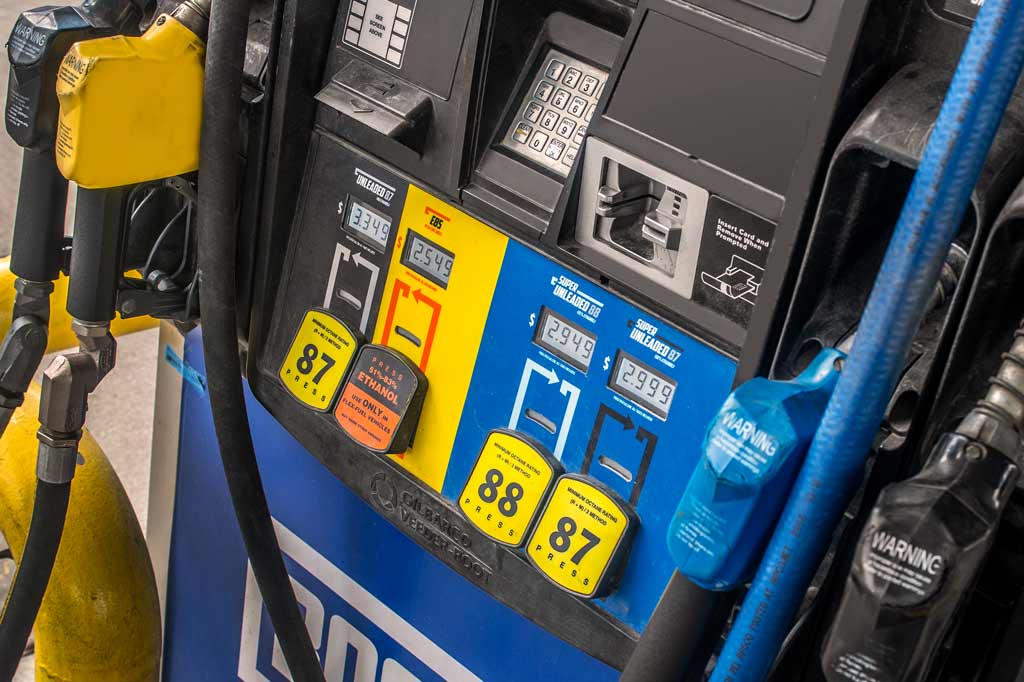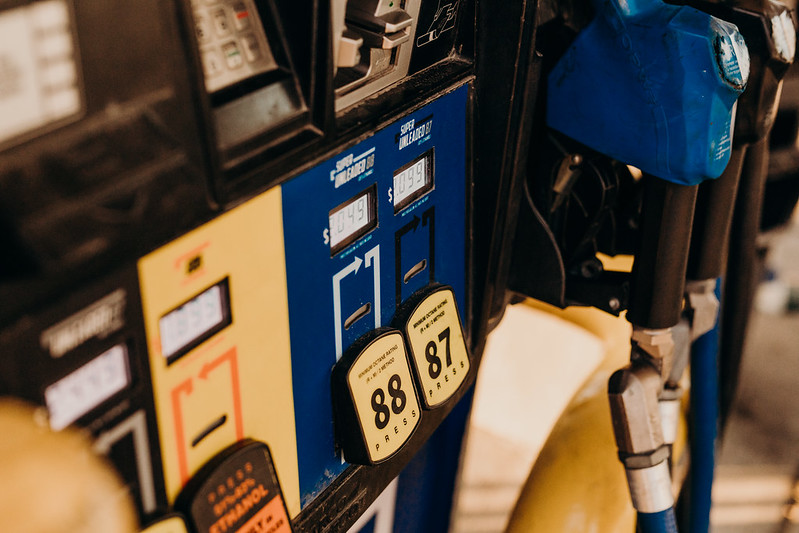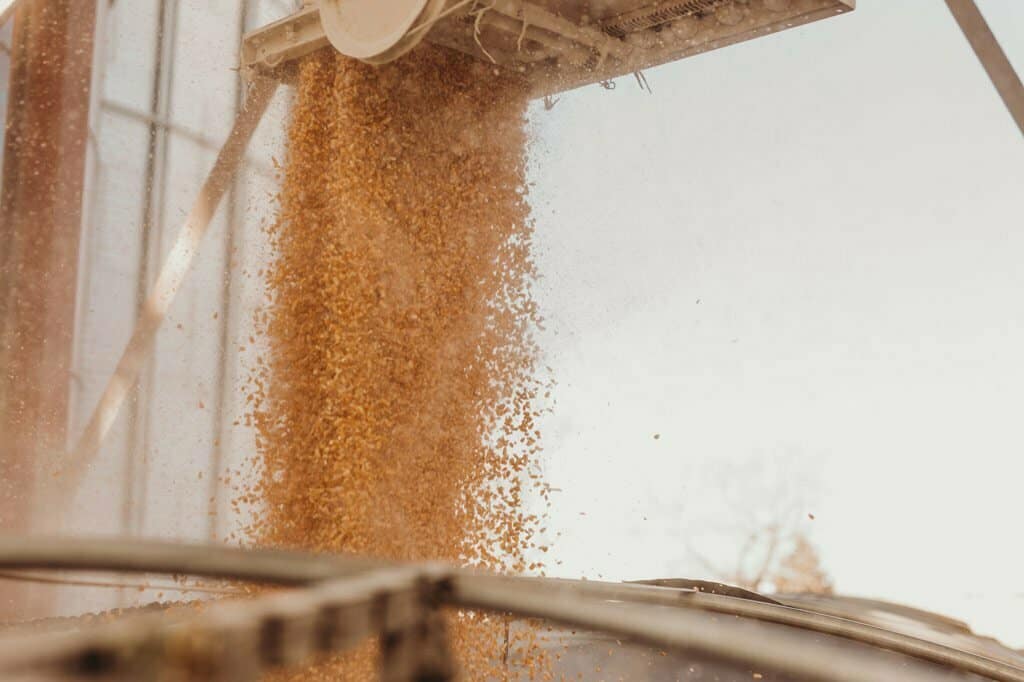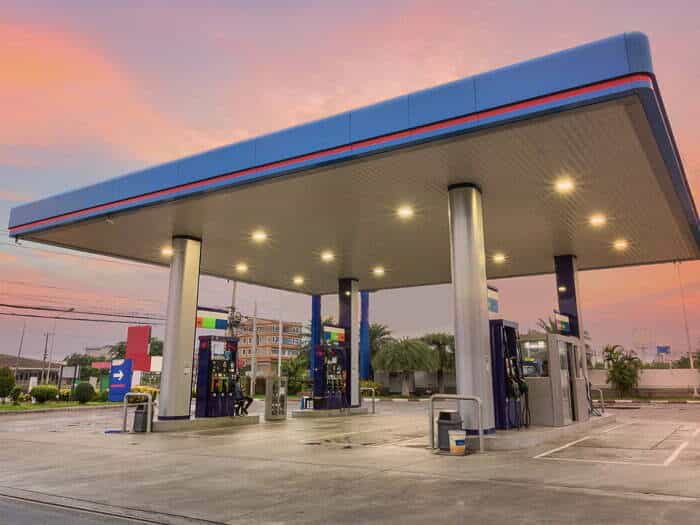What Is Ethanol?
Ethanol is a high-octane, clean-burning renewable fuel that’s added to gasoline to improve air quality, engine performance and environmental impact. It’s primarily made from field corn, much of which is grown in Nebraska. Learn more about its benefits for you and the environment.
How Ethanol is Made and How It’s Used
Ethanol is an eco-friendly biofuel that powers our cars, trucks and equipment with renewable resources. Made from plants, ethanol is a sustainable biofuel product that reduces pollution while providing an economic benefit to rural communities in Nebraska and across the country.
More about how ethanol is made:
- What Are Biofuels? Biofuels are fuels made from living things. Ethanol is a biofuel because it is made from plants, usually corn. Ethanol is sustainable because corn can be planted and grown year after year. Other common biofuels include biogas (often made from methane gas) and biodiesel (made from the fats in plants and animals).
- How Is Ethanol Made? Ethanol biofuel is made from corn by breaking down the starch in kernels into sugar and then fermenting it into a liquid. Protein and fiber solids left over from the making of ethanol, called distillers’ grains, are used as a high-quality livestock feed.
- How Does Ethanol Reduce Pollution? Adding ethanol to gasoline reduces air pollution by reducing the amount of greenhouse gasses in vehicle exhaust. Cars and trucks designed to run on flex fuel can use either ethanol biofuel or traditional gasoline for power. Blending ethanol with gasoline can sometimes increase the fuel’s octane and can help engines run better by cleaning the engine and preventing buildup of deposits. Ninety-eight percent of vehicle fuel sold in the United States is a blend of up to 10% ethanol, called E10.

Ethanol Is Cleaner for Our Earth
Ethanol is energy positive, which means that it produces more energy than we use to make it. In fact, ethanol reduces greenhouse gases by up to 43%, when compared to petroleum-based gasoline. To put that in perspective, the amount of ethanol used around the world each year equates to removing 20 million cars from the road.
Ethanol Is Better for Your Budget
Because ethanol contains less energy than petroleum-based gasoline, you may see a slight drop in your gas mileage when using a higher blend such as E85; however, the price per gallon advantage of higher ethanol blends typically still outweighs this imbalance.
In other words, it’s not just about miles per gallon. It’s also about cost per mile. Here’s how the math works:
- Assume that using E85 may result in a miles-per-gallon reduction of up to 12%.
- If E85 costs 12% less than E10, you’re miles – and money – ahead.
- So, if E10 costs $2.00 per gallon, E85 would need to cost 24¢ less ($1.76) in order for you to “break even.” And every penny discount above 24¢ reduces your cost per mile even further.
The reality is, E85 blends will almost always be priced at a much greater discount than 12%. If it’s not, you need to find another fuel retailer!
Ethanol Is Safer for Your Family
The atmosphere isn’t the only thing to consider when choosing the fuel that’s right for your family. Unlike gasoline, ethanol does not release deadly toxins into our air.
Gasoline contains a lethal combination of cancer-causing toxins known as BTX – short for benzene, toluene and xylene. These carcinogens are added to gasoline to enhance octane – at the expense of human safety.
Ethanol is a natural (and safe) octane booster. The more ethanol blended into traditional gasoline, the higher the octane.
ETHANOL FAQs
Blender Pump Grant Program
The Blender Pump Incentive Program aims to enhance ethanol fueling infrastructure across Nebraska. Retailers within the state are eligible to apply for and potentially receive up to $50,000. This initiative aims to enhance ethanol infrastructure in Nebraska by supporting the expansion of higher ethanol blends, including E15, E30 and E85.

Making the Most of Ethanol Production
According to the latest USDA research, 1 unit of energy invested in the corn ethanol production process results in 2.3 units of usable energy in the form of ethanol.

That means ethanol has a positive energy balance. We get more energy out of a gallon of ethanol than it takes to produce it – including the energy it takes to grow, transport and process the corn used to make ethanol. Improved ethanol production technology and new precision farming practices have dramatically improved the energy balance of ethanol. The amount of thermal energy required to make a gallon of ethanol has fallen 36% since 1995, while electricity use is down 38%. At the same time, producers are squeezing 12% more ethanol out of every bushel of corn.
Nebraska is the nation’s second largest ethanol producer. The state’s 24 ethanol plants have a total production capacity of more than 2 billion gallons annually. Combined, these plants use more than 750 million bushels of corn per year and produce more than 6 million tons of distillers grains, a high protein livestock feed.
Food or Fuel
While many people assume ethanol can come from any type of corn, the type used to make ethanol is not the sweet corn we eat. Some 99% of the corn grown in Nebraska is field corn, which is rarely used for food.
Ethanol production accounts for less than 5 percent of the world’s total grain production – just 175 million metric tons out of 3.6 billion. The vast majority of grain is used for livestock feed and corn products.
The food or fuel debate ignited in 2008-2011, when grain prices doubled due to increased demand around the world. Because this coincided with significant growth in grain demand for ethanol beginning in 2002, the blame for price increases in food was placed on the ethanol industry.
But the greatest impact on food prices during this period was the increase in the price of crude oil, which peaked at $145 per barrel in 2008. Spiking oil prices increased the cost to transport grain to processors and transport food products to grocery stores.
The implied connection between ethanol production and food prices is a myth. Today, ethanol production is at a record high – and stockpiles of grain are at some of the highest levels in history.
Ethanol production plants continue to improve their efficiency and get more gallons of fuel out of the same volume of feedstock with less energy. Farmers continue to grow even more grain year after year to meet increased demand for meat and dairy products among the world’s growing middle class. As a result, the percentage of grain devoted to ethanol is expected to decrease even further.
Recycling Distillers Grains Back into Food
Conventional ethanol is produced from the starch within the kernel of that field corn. The protein and fiber that remain become a high-quality animal feed called distillers grains. In fact, nearly 40% of the nutritional value of corn used in ethanol production is retained – and returned to the feed sector in the form of distillers grains and corn oil. That feed is fed to animals to produce meat, eggs and dairy products for a rapidly growing middle class around the globe.
So we really don’t have to make a choice between food and fuel. Because when ethanol is produced from corn, we are producing fuel and food.
Find an ethanol gas station

Biofuel can make using your car cleaner and safer, as long as you pick the right blend.
UNL 87 (E10): When you go to the gas station and choose UNL 87 (also called E10, which is 10% ethanol), you’re already pumping some biofuel into your tank. But you can do even more. Now, it’s time to take the next step.
UNL 87/88 (E15): According to the EPA, cars made this century (specifically since 2001) are approved for UNL88 (also called E15, which is 15% ethanol). This increase from E10 to E15 may seem small, but the impact is significant. When you change fuel, you’ll feel great. So will your car – whose engine will burn cleaner as a result.
E20/30/40/50/85: These higher blends are designed for the nearly 23 million flex fuel vehicles on the road today.
Gas costs can be a downer on your wallet. But during Renewable Fuels Month each May, gas pumps across Nebraska help customers with special prices for ethanol blended gasoline. If you live near a participating location, it can be a great way to save on fuel costs.
Want to learn more about how you can use ethanol, like where the nearest gas station is? Use our biofuel finder tool!

